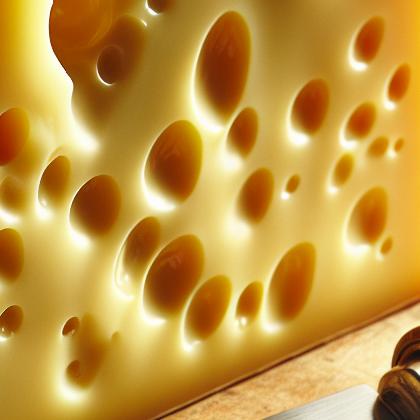Showing results for 'Gruyere Cheese'
close
Gruyere Cheese

Gruyère (/ɡruːˈjɛər/ or /ɡrɨˈjɛər/; French pronunciation: [ɡʁyjɛʁ], German: Greyerzer) is a hard yellow cheese, named after the town of Gruyères in Switzerland, and originated in the cantons of Fribourg, Vaud, Neuchâtel, Jura, and Berne. Before 2001, when Gruyère gained the appellation d'origine contrôlée (AOC, now AOP) status as a Swiss cheese, some controversy existed whether French cheeses of a similar nature could also be labelled Gruyère (French Gruyère style cheeses include Comté and Beaufort).
Gruyere Cheese Pairs With:
Food Item
Flavor Affinity Level

Did you know there are 38 food flavor pairings in my database for Gruyere Cheese available. What you are seeing above is a random list of 30 items which pair with Gruyere Cheese.
For the entire list, beautifully formatted, enter your email address and click the download button below, then I'll email it to you as a PDF.
Gruyere Cheese Properties:
| Food Property | Type | Description |
|---|---|---|
| Flavor Profile | Umami | Gruyere cheese has a rich, savory taste with a slight nuttiness. |
| Salty | Gruyere cheese has a moderately salty flavor that enhances its overall taste. | |
| Texture | Firmness | Gruyere cheese has a firm texture that is slightly dense but still creamy when melted. |
| Nutritional Value | Macronutrients | Gruyere cheese is high in protein and fat, making it a rich and satisfying dairy product. |
| Micronutrients | Gruyere cheese contains important micronutrients such as calcium and phosphorus that support bone health. | |
| Color | Natural Pigments | Gruyere cheese has a pale yellow color due to the natural pigments present in the cheese. |
| Aroma | Volatile Compounds | Gruyere cheese has a complex aroma with hints of nuttiness and sharpness. |
| Chemical Composition | Acidity/Alkalinity (pH) | Gruyere cheese has a slightly acidic pH level that contributes to its overall flavor profile. |
| Cooking Behavior | Heat Conductivity | Gruyere cheese melts easily and evenly due to its excellent heat conductivity properties. |
| Water Retention | Gruyere cheese retains its moisture well when melted, resulting in a smooth and creamy texture. | |
| Oil Absorption | Gruyere cheese absorbs oil moderately during cooking, adding richness to dishes. |
Food Pairing App - Version 1.2.0
